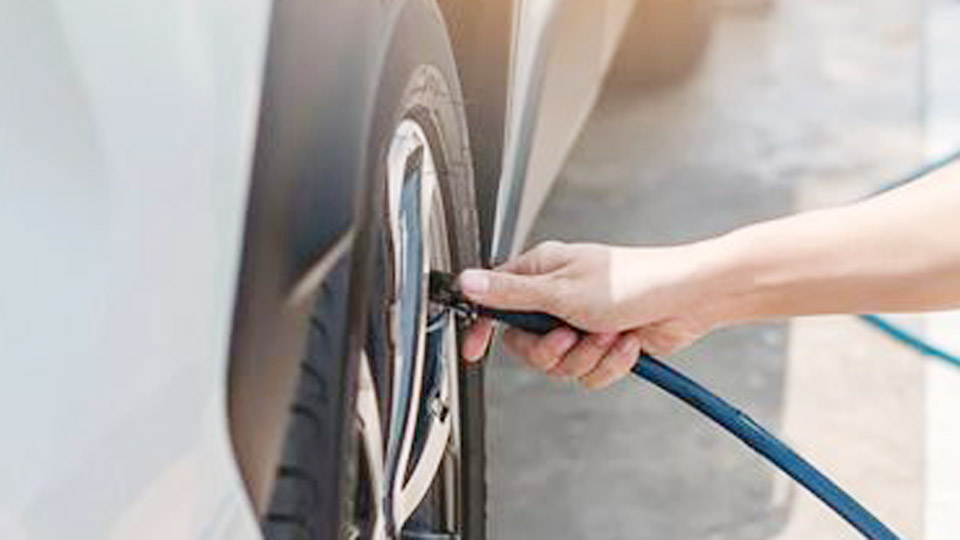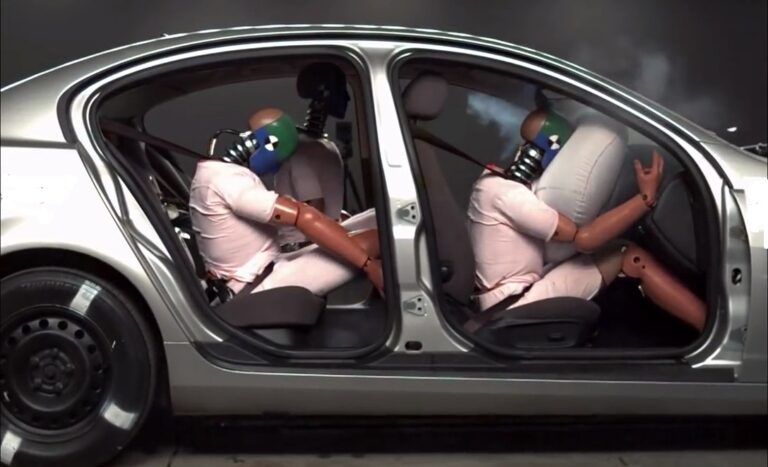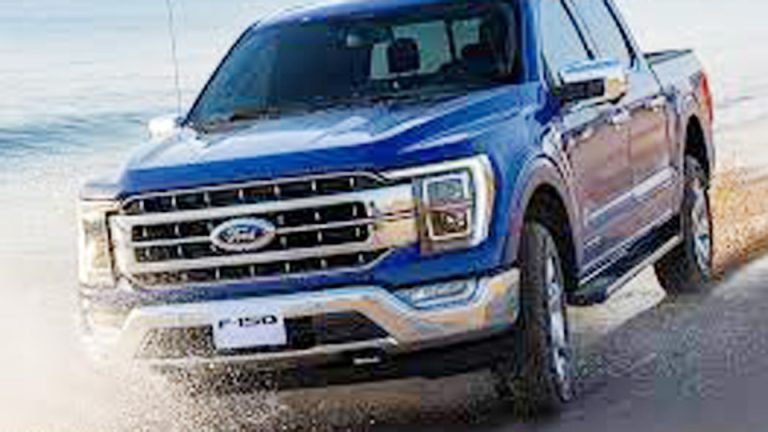I’ll be honest—when I first heard about using nitrogen in car tires instead of regular air, I thought it was just a gimmick for race cars or luxury vehicles. But after constantly dealing with fluctuating tire pressure, uneven wear, and more trips to the gas station than I liked, I decided to give nitrogen a try.
And to my surprise, it actually made a noticeable difference. The pressure stayed consistent, the ride felt smoother, and my tires lasted longer than they used to.
Of course, that doesn’t mean nitrogen is perfect—or that regular air is bad. I’ve used both over the years, and each has its pros and cons depending on how you drive and what you expect from your tires.
I’ll share my personal experience with nitrogen vs air, break down the differences, and help you decide which option might be the better fit for your car, your driving habits, and your budget.

Image by coolwavecarwash
Nitrogen and Air in Tires
Before we compare nitrogen in car tires vs air, let’s break down what each is. Regular air, the stuff we breathe, is about 78% nitrogen, 21% oxygen, and a mix of other gases, with some water vapor mixed in. Nitrogen tire inflation uses nearly pure nitrogen—around 93-99%—to fill your tires.
The idea is that nitrogen’s properties, like being drier and leaking slower, offer advantages over air. I first tried nitrogen on my Camry when a shop offered it with new tires, and it got me curious about how it stacked up against air in my other vehicles, like my F-150.
Science Behind Nitrogen vs Air
Why does nitrogen behave differently? It’s simple science. Nitrogen molecules are slightly larger than oxygen molecules, so they seep through tire rubber more slowly. Plus, nitrogen is dry, unlike regular air, which contains moisture.
That moisture can cause pressure changes in hot or cold weather and even rust your wheels. I noticed this with my Chevy Silverado—air-filled tires lost pressure faster in winter than my nitrogen-filled Camry’s tires. This science sets the stage for the comparison between nitrogen and air.
Comparing Nitrogen and Air: Key Differences
After using both nitrogen and air in my cars and trucks, I’ve seen how they perform differently. Here’s a detailed look at nitrogen in car tires vs air, based on my experience:
Pressure Stability
Nitrogen wins big here. Its larger molecules and lack of moisture mean it leaks slower through tire rubber. I checked my Camry’s nitrogen-filled tires monthly, and they rarely lost more than a psi, even in freezing weather.
My air-filled Silverado, on the other hand, dropped 3-5 psi in cold months, needing frequent top-offs. Stable pressure means better handling, safer driving, and less time messing with a tire pump.
Fuel Economy
Underinflated tires increase rolling resistance, making your engine burn more gas. Nitrogen’s stable pressure helps keep tires at the right psi, boosting fuel efficiency. I noticed this with my F-150—after switching to nitrogen, I got about 1-2 mpg more on highway trips.
Air-filled tires, like on my old Dodge Ram, lost pressure faster, hurting mileage. The difference isn’t huge, but it adds up over time.
Tire Life
Proper tire pressure reduces uneven wear, so your tires last longer. Nitrogen’s consistency helps maintain that ideal pressure. My friend’s Nissan Altima had nitrogen-filled tires, and they lasted about 5,000 miles longer than his previous air-filled set.
My Camry’s tires hit 48,000 miles with even tread wear, thanks to nitrogen. Air-filled tires, if not checked often, can wear unevenly due to pressure loss.
Wheel Corrosion
Moisture in regular air can rust alloy wheels, especially in humid or salty areas. Nitrogen is dry, so it minimizes corrosion. I saw this with my Ram in snowy, salted winters—air-filled wheels showed rust inside, while my nitrogen-filled Camry’s wheels stayed clean. For long-term wheel health, nitrogen has a clear edge.
Performance in Extreme Weather
Nitrogen is less affected by temperature swings. Air expands in heat and contracts in cold, causing pressure fluctuations. Nitrogen stays more stable, which is great for consistent performance.
I took my Wrangler off-roading in the desert, and its nitrogen-filled tires held steady, while my air-filled Accord’s tires needed adjustments in similar heat. Nitrogen shines in extreme climates.
Safety
Consistent tire pressure improves handling, braking, and traction, making your car safer. Underinflated tires can feel sluggish or cause skids, especially in rain or snow. I felt more confident towing with my F-150 after switching to nitrogen—the tires stayed at the right pressure, giving me better control. Air-filled tires require more vigilance to maintain safety.
Cost and Accessibility
Here’s where air has an advantage. Air is free or cheap at gas stations, usually $1-$2 for a pump. Nitrogen costs $5-$20 per tire to fill, though some shops include it free with new tires.
Refills are $3-$10, and not every shop offers nitrogen. I paid $30 to fill my Camry’s tires with nitrogen, but I use air in my Ram to save money. Air’s easier to find, especially in rural areas.
Nitrogen vs Air: A Side-by-Side Comparison
Here’s a table summarizing nitrogen in car tires vs air, based on my experience:
| Feature | Nitrogen | Regular Air |
|---|---|---|
| Pressure Stability | High (leaks slower) | Moderate (leaks faster) |
| Moisture Content | Dry (no water vapor) | Contains moisture |
| Wheel Corrosion | Minimal | Can cause rust |
| Fuel Economy | Slightly better | Standard |
| Tire Life | Longer (even wear) | Shorter if pressure varies |
| Cost | $5-$20 per tire | Free or $1-$2 |
| Accessibility | Limited to shops | Widely available |
This table helped me decide when to use nitrogen (my Camry) and when air was fine (my Ram).
How Nitrogen and Air Are Used in Tires
Filling tires with air is simple—you use a compressor at a gas station or shop. Nitrogen requires a special generator that purges air from the tire and fills it with pure nitrogen. I watched this process on my Camry—the tech hooked up a machine that cycled nitrogen through the tires to remove oxygen and moisture.
It takes about 5 minutes per tire. Air is quicker to fill, but nitrogen’s benefits come from that extra effort. Some shops use green valve caps to mark nitrogen-filled tires, which I’ve seen on my F-150.
My Real-World Experience with Nitrogen and Air
Let me share a couple of stories to show how nitrogen and air compare. When I got new tires for my Toyota Camry, the shop offered nitrogen for $7 per tire. I gave it a shot, and over the next year, the tires held pressure like champs—barely a 1-psi drop in winter.
My fuel economy improved by about 1 mpg, and the tires wore evenly, lasting nearly 50,000 miles. Compare that to my air-filled Dodge Ram, which needed topping off every few weeks in cold weather, and I could feel the difference in handling.
On my Ford F-150, I tow a trailer for work, and tire pressure is critical. After switching to nitrogen, the tires stayed steady even on long, hot hauls.
My air-filled Jeep Wrangler, used for off-roading, lost pressure faster in the desert, making it less reliable. Nitrogen made towing safer and maintenance easier, while air was fine for my budget-conscious Ram.
Cost Breakdown: Nitrogen vs Air
Here’s what I’ve seen for costs:
| Item | Estimated Cost | Notes |
|---|---|---|
| Nitrogen Fill (per tire) | $5-$20 | Sometimes free with new tires |
| Nitrogen Refill | $3-$10 per tire | To maintain purity |
| Nitrogen Tank (DIY) | $200-$500 | For enthusiasts |
| Regular Air | Free-$2 | Available at gas stations |
| Professional Tire Service | $50-$150 | Includes nitrogen, alignment, etc. |
I paid $28 for nitrogen in my Camry’s four tires, and it saved me time and gas. For my Ram, I stick with air to keep costs low.
Who Should Use Nitrogen?
Nitrogen isn’t for everyone, but here’s who I think benefits most:
- Frequent Drivers: If you rack up miles, like I do with my F-150, nitrogen reduces pressure checks.
- Towing or Hauling: Stable pressure is key for heavy loads. My F-150’s towing trips were smoother with nitrogen.
- Extreme Climates: Hot summers or cold winters cause pressure swings with air. Nitrogen helped my Wrangler in desert heat.
- Performance Cars: Enthusiasts with cars like my friend’s Mustang love nitrogen for precise handling.
- Luxury Vehicles: Nitrogen prevents corrosion on high-end wheels. My buddy’s BMW wheels stayed pristine.
If you’re a casual driver with an older car, like my Ram, air’s usually fine.
Who Should Stick with Air?
Air makes sense in these cases:
- Budget Drivers: Air’s free or cheap. I use it in my Ram to save cash.
- Short Trips: If you don’t drive much, like my neighbor’s Altima, air works fine.
- No Nitrogen Access: Rural areas may lack nitrogen stations. My rural friend uses air for his Chevy.
- Older Vehicles: Worn tires or wheels don’t benefit as much from nitrogen. My Ram’s old rims don’t justify the cost.
Maintaining Nitrogen-Filled Tires
Nitrogen doesn’t mean you skip tire care. Here’s how I maintain mine:
- Check Pressure Monthly: Use a quality gauge. My Camry’s nitrogen-filled tires rarely need topping off.
- Top Off with Nitrogen: Go to a shop with nitrogen to maintain purity. I learned this after using air on my F-150, which reduced benefits.
- Inspect for Damage: Nitrogen won’t fix punctures. My Wrangler had a slow leak that needed patching.
- Rotate Tires: Every 5,000-8,000 miles for even wear. I do this on all my cars.
Maintaining Air-Filled Tires
Air-filled tires need more attention:
- Check Pressure Weekly: Air leaks faster, especially in cold weather. I check my Ram’s tires often.
- Top Off Anywhere: Gas stations or portable pumps work. I keep a compressor for my Ram.
- Watch for Wear: Uneven wear is common with air if you don’t stay on top of pressure.
- Clean Wheels: Air’s moisture can cause rust. I clean my Ram’s rims to prevent corrosion.
Common Myths About Nitrogen vs Air
I’ve heard some misconceptions, so let’s clear them up:
Myth: Nitrogen Never Leaks: It leaks slower, but you still need to check pressure. My Camry’s tires lose a bit over time.
Myth: Nitrogen Transforms Performance: It helps consistency, not horsepower. My Mustang didn’t become a race car.
Myth: Air and Nitrogen Can’t Mix: You can top off with air, but it dilutes nitrogen’s benefits. I did this on my F-150 and noticed more pressure loss.
Myth: Nitrogen’s Only for High-End Cars: It’s great for any vehicle, like my F-150 for towing.
Getting Nitrogen in Your Tires
Ready to try nitrogen? Here’s how I do it:
- Find a Shop: Most tire shops or dealerships offer nitrogen, often free with new tires. I got it for my Camry at a local shop.
- Check Purity: Ensure 93-99% pure nitrogen for best results. My F-150’s shop used 95% purity.
- Look for Green Caps: They mark nitrogen-filled tires. My Camry’s green caps make it easy to spot.
- Maintain with Nitrogen: Top off at a shop with nitrogen to keep benefits. I do this every few months for my Camry.
Nitrogen vs Air in Different Vehicles
Here’s how nitrogen and air performed in my vehicles:
| Vehicle | Nitrogen Performance | Air Performance |
|---|---|---|
| Toyota Camry (2015) | Stable pressure, better mileage | More pressure loss, standard mileage |
| Ford F-150 (2018) | Consistent towing, less corrosion | Frequent top-offs, some rust |
| Jeep Wrangler (2010) | Steady in heat, even wear | Pressure swings off-road |
| Dodge Ram (2006) | Minimal corrosion | Rusty wheels, uneven wear |
Nitrogen shone in my Camry and F-150, while air was fine for my Ram’s light use.
What Not to Do with Nitrogen or Air
I’ve made mistakes with both. Here’s what to avoid:
- Don’t Mix Freely: Topping nitrogen tires with air reduces benefits. I did this on my F-150 and regretted it.
- Don’t Skip Checks: Both need regular pressure checks, though nitrogen less often.
- Don’t Ignore Leaks: Neither fixes punctures. My Wrangler needed a patch regardless of fill.
- Don’t Overpay for Nitrogen: Shop around for fair prices. I got a deal on my Camry.
Practical Tips for Choosing Between Nitrogen and Air
Here are my tips for picking the right option:
- Compare Costs: Nitrogen’s worth it for frequent drivers, but air’s fine for budget cars.
- Check Availability: Ensure your local shop offers nitrogen refills. I confirmed this for my Camry.
- Monitor Pressure: Use a digital gauge for accuracy, whether nitrogen or air.
- Combine with Maintenance: Check tires when rotating or servicing your car.
These tricks make tire care easy, no matter what you choose.
Nitrogen or Air, Make the Right Choice
So, what’s the deal with nitrogen in car tires vs air? From my experience with my Camry, F-150, and more, nitrogen offers stable pressure, better fuel economy, longer tire life, less corrosion, and improved safety—perfect for frequent drivers, towing, or extreme climates.
Air’s free, widely available, and fine for casual drivers or older cars like my Ram. Both work, but nitrogen’s benefits shine for those who want less hassle and better performance.
Pick what fits your driving habits, check your tires regularly, and keep your ride rolling smoothly. Here’s to safe drives and happy tires!
Frequently Asked Questions
What’s the difference between nitrogen in car tires vs air?
Nitrogen leaks slower, stays drier, and maintains pressure better, reducing corrosion and improving efficiency. Air’s free but leaks faster and contains moisture.
Is nitrogen worth the cost compared to air?
Nitrogen’s great for frequent drivers or towing, like my F-150, but air’s fine for budget cars like my Ram. It depends on your needs.
How much does nitrogen cost compared to air?
Nitrogen costs $5-$20 per tire, sometimes free with new tires. Air’s free or $1-$2 at pumps. I paid $28 for my Camry’s nitrogen fill.
Can I mix nitrogen and air in my tires?
You can, but air dilutes nitrogen’s benefits. I mixed air in my F-150 once, and pressure loss increased.
How often should I check tire pressure with nitrogen or air?
Check nitrogen monthly—it leaks slower. Check air weekly, especially in cold weather. I check my Camry’s nitrogen tires every 4-6 weeks.




